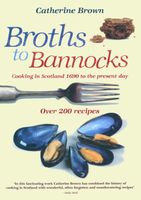Advertisement
Flowers
Appears in
Published 1990
Not so long ago eating flowers was a much more common idea. Cowslip cream, violet soufflé, daffodil pie, marigold and mutton broth, salmon garnished with violets, nasturtium salad, fennel and mimosa salad were just a few of the flowery concoctions which enlivened the scent, taste and appearance of the Victorian dinner table.
Also full of references to flowers, mostly roses and violets, was classical Roman cookery. Today, in Japan, lily buds and jasmine are floated in soups, tea is scented with lotus; marigolds, narcissi and peonies, and chrysanthemums are fried in batter. Middle Eastern dishes, from pastry to ice cream, are flavoured with orange flowers and roses. In old recipes, carnations, chrysanthemums, dandelions, elderflowers, marigolds, nasturtiums, roses and violets are the most favoured for their subtle scent and flavour. Mediterranean countries sell masses of courgette flowers every summer, just for the eating.

